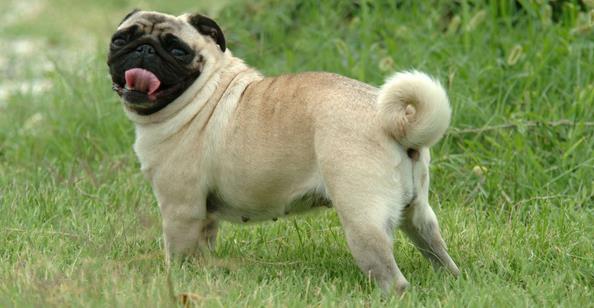Training your pug is not only a rewarding experience for you but also an essential aspect of ensuring a well-behaved and happy furry friend. Pugs, known for their intelligence and affectionate nature, respond well to positive reinforcement and consistency. Here’s a comprehensive training guide to unleash the full potential of your playful pug.
- Start Early and Be Consistent:
Begin training your pug as early as possible. Puppies are like sponges, absorbing information quickly. Establish consistent rules from the start to avoid confusion. Whether it’s housebreaking or basic commands, consistency is key to a well-trained pug.
- Positive Reinforcement:
Pugs thrive on positive reinforcement. Use treats, praise, and affection to reward good behavior. Whenever your pug follows a command or exhibits desirable behavior, immediately reward them. This positive association encourages them to repeat the behavior.
- Basic Commands:
Teach your pug basic commands such as sit, stay, come, and down. Keep training sessions short and enjoyable, focusing on one command at a time. Use a calm and encouraging tone, and always end on a positive note. Repeat commands consistently to reinforce their understanding.
- Socialization is Key:
Pugs are sociable creatures, and early socialization is crucial. Expose your pug to various people, places, and other animals to help them develop positive behavior in different situations. This early exposure builds confidence and reduces the likelihood of fear or aggression.
- Crate Training:
Crate training can be a valuable tool for both housebreaking and providing your pug with a safe and comfortable space. Introduce the crate gradually, associate it with positive experiences, and never use it as a form of punishment. This helps create a positive association with the crate.
- Leash Training:
Pugs can be strong-willed on walks, so leash training is essential. Start with short, positive walks, rewarding good behavior. If your pug pulls, stop and wait for them to relax before continuing. Consistency and positive reinforcement will help make walks an enjoyable experience for both of you.
- Addressing Undesirable Behaviors:
If your pug exhibits undesirable behaviors such as excessive barking, digging, or chewing, address these issues with patience and redirection. Instead of scolding, redirect their attention to an appropriate activity or toy. Consistency in correcting unwanted behaviors is crucial.
- Advanced Training:
Once your pug has mastered basic commands, consider advanced training for mental stimulation. Teach tricks, agility exercises, or engage in activities like scent games to keep their minds active. Advanced training not only challenges your pug but also strengthens the bond between you.
- Professional Training Classes:
Consider enrolling your pug in professional training classes, especially if you’re a first-time dog owner. Professional trainers can provide guidance, address specific issues, and offer valuable tips for effective training.
Conclusion:
Training your pug is a journey filled with love, patience, and mutual understanding. By starting early, being consistent, and focusing on positive reinforcement, you’ll shape your pug into a well-mannered and delightful companion. Remember, every training session is an opportunity to strengthen the bond with your playful pal while building a foundation for a happy and harmonious relationship.


Leave a Comment